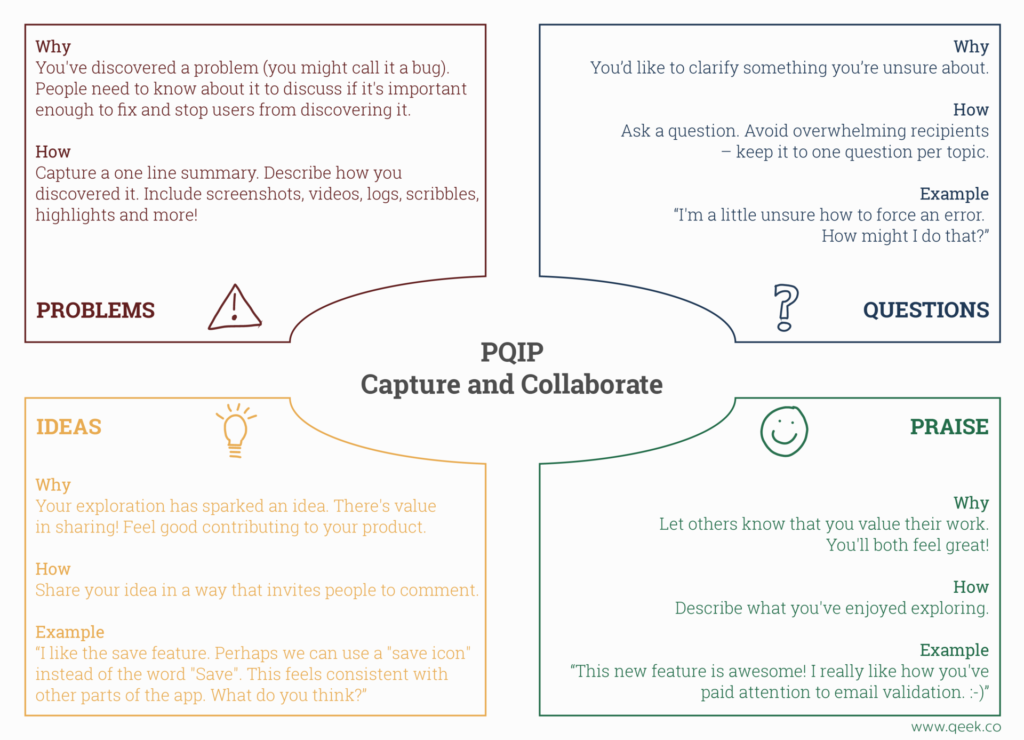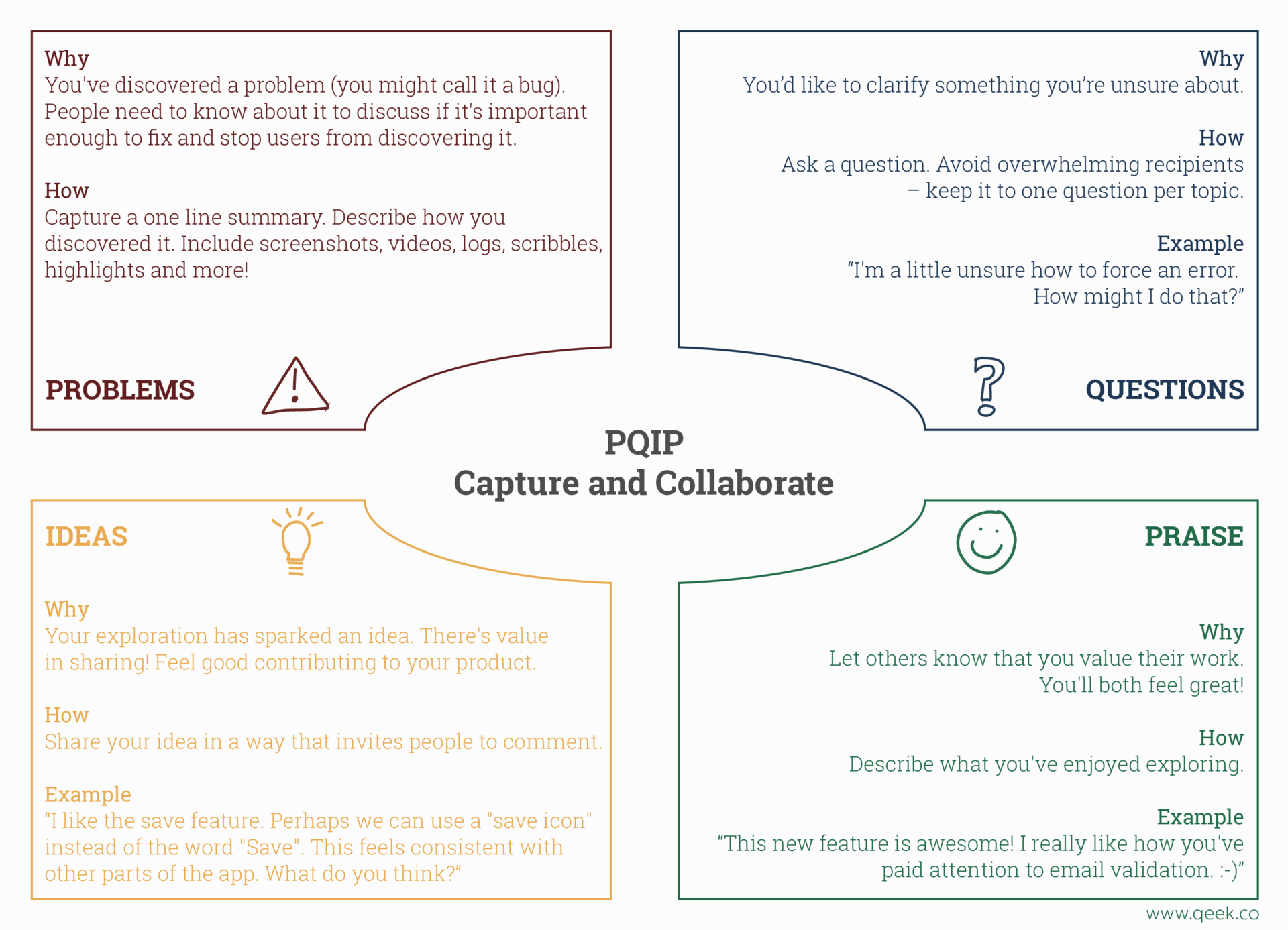
TL;DR
Now that we know the second diagram, The Testing Is The Learning Loop, let’s explore Simon’s third diagram, Problems, Questions, Ideas, and Praises (PQIP). This is a part of the Exploratory Testing Pathway. Many thanks to Marcel, who sublimed this great resource on his blog, That’s the buffet table.
Beyond The Pass And Fail
Simon explains that when you center your testing effort around test cases, your test session result is either pass or fail. Furthermore, all stakeholders are only interested in fail results. But the pass result also could contain important information about the product.
PQIP Report
PQIP stands for Problems, Questions, Ideas, and Praises. These are categories that Simon is using in his exploratory session findings report.
We will provide a different example from Simons. In our previous post, we explained an issue with Samsung Active2 Watch.
The Problem
We first noticed that the Active2 Samsung watch does not turn the display on when it is on the provided magnetic charger, and the Power On button is pressed. We classify this as a problem (and not just a failure) with additional information on why we think that this is a problem. The heuristic is a rule of thumb that we used to solve a problem. In the User documentation, we found instructions on how to turn the Watch on, and our experience tells us that display should turn on when we press power on the button while the Watch is charging. Our oracle is displayed on. Additional useful data could be Watch and charger version numbers (if visible on them) and what is a type of charger. We add a USB magnetic Samsung charger.
Idea And Question
We have an idea that maybe the USB charger is the problem. Question pop-ups: Where we put USB? We first used the iPhone USB wall socket adapter. Perhaps those two are not compatible. Let’s stick USB in MacBook pro using a USB-C adapter. This idea is input for our next test experiment.
Praise
We noticed that having a magnetic charger for Watch is pretty handy, so we put that Praise into our notes.
Remember
Now you run your notes with other teammates. Having these data at their disposal, your testing story is revealed, and it is much easier for them to get into that story to provide their valuable input.



